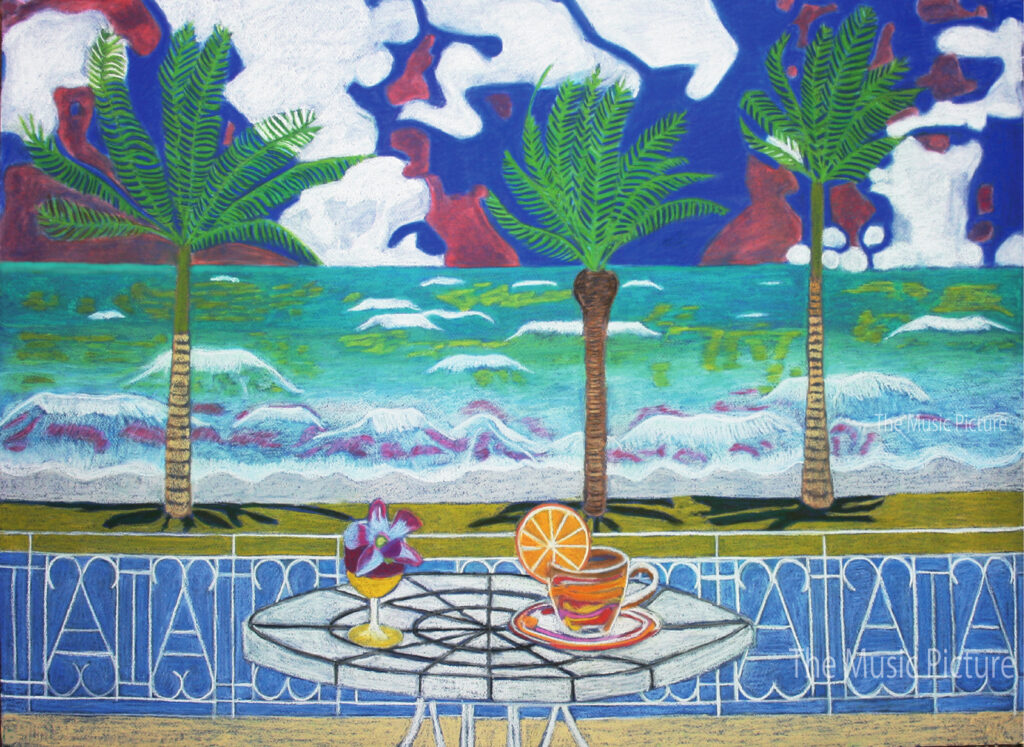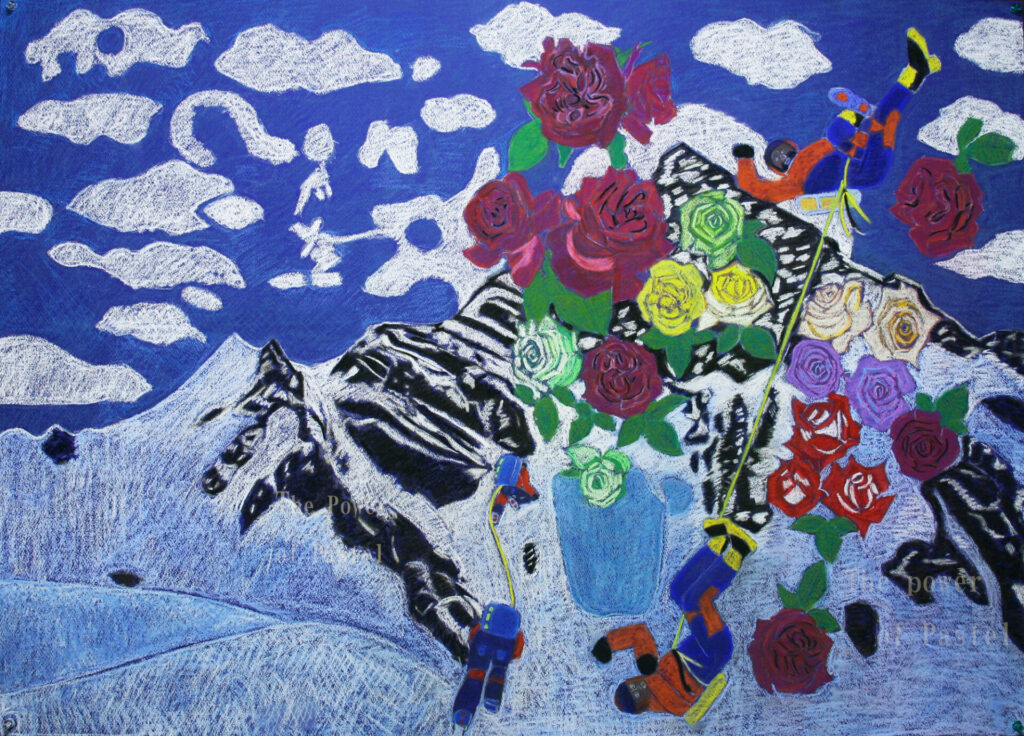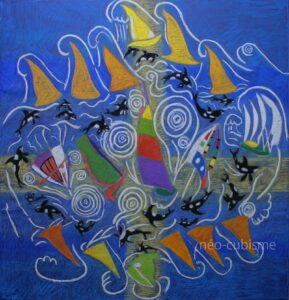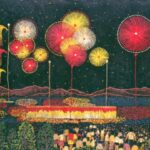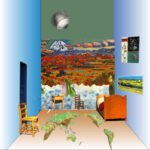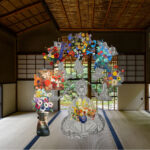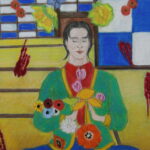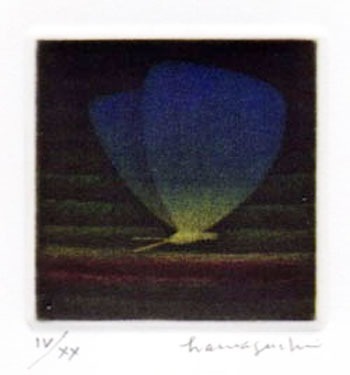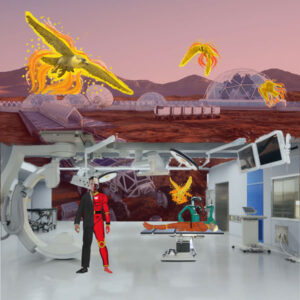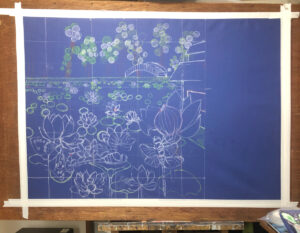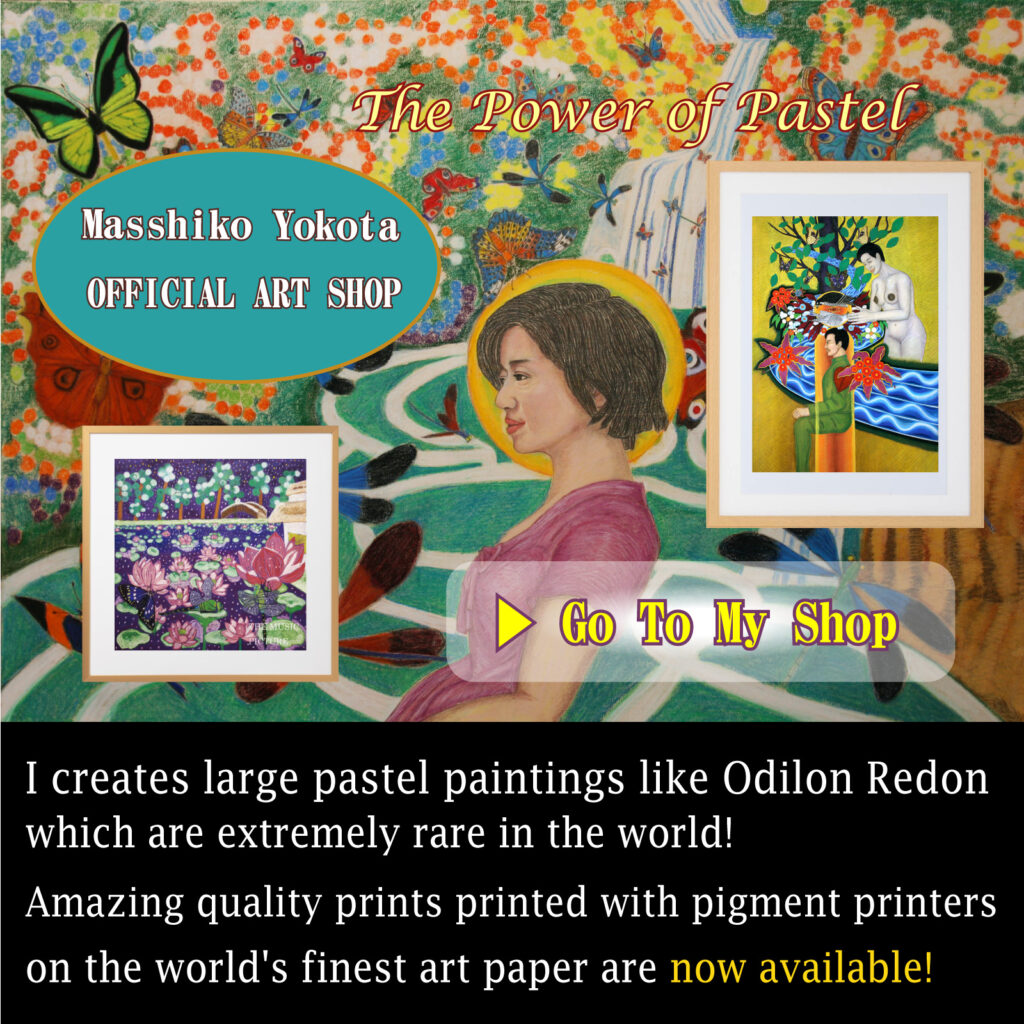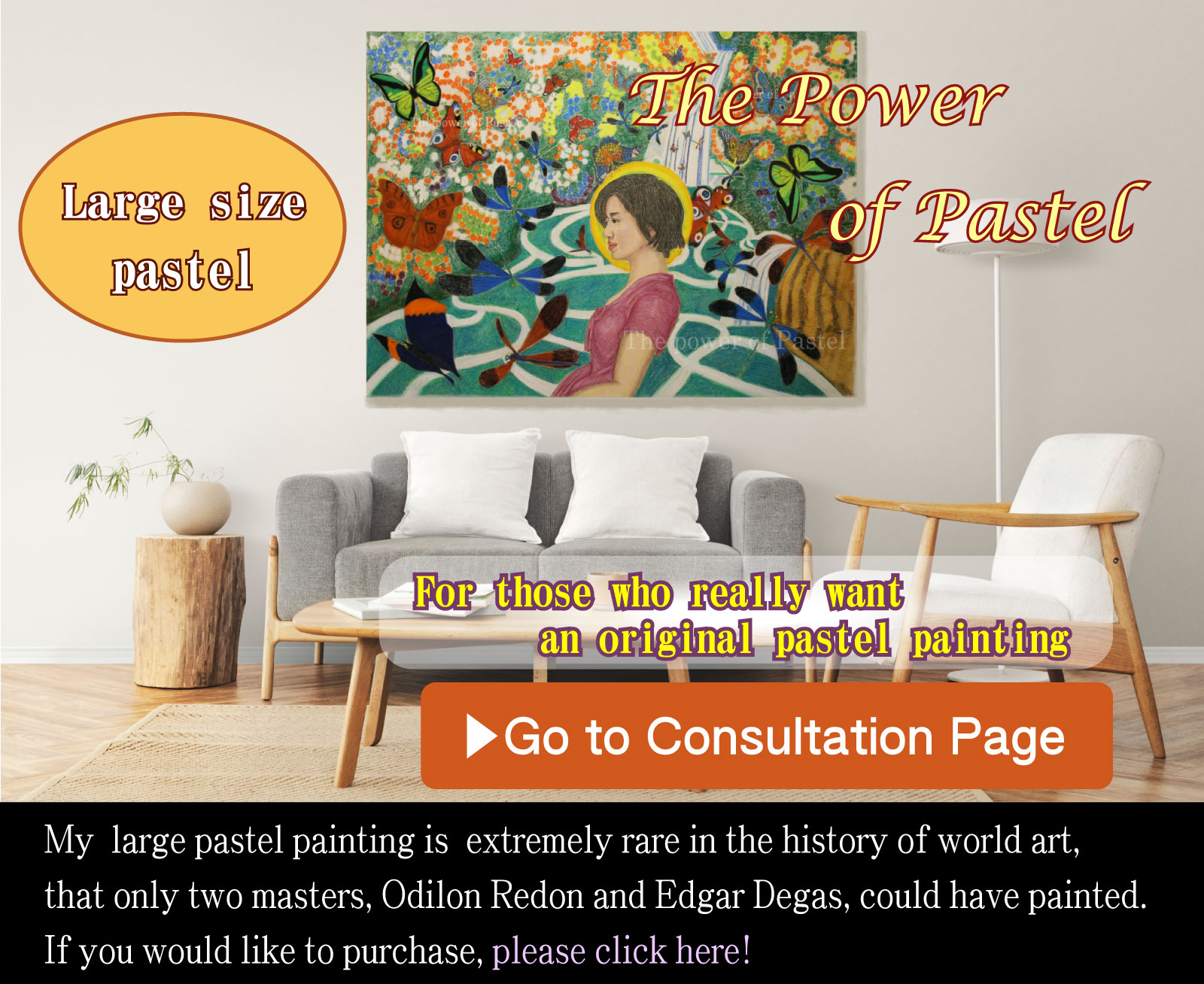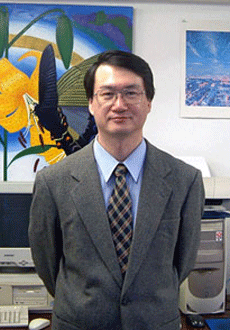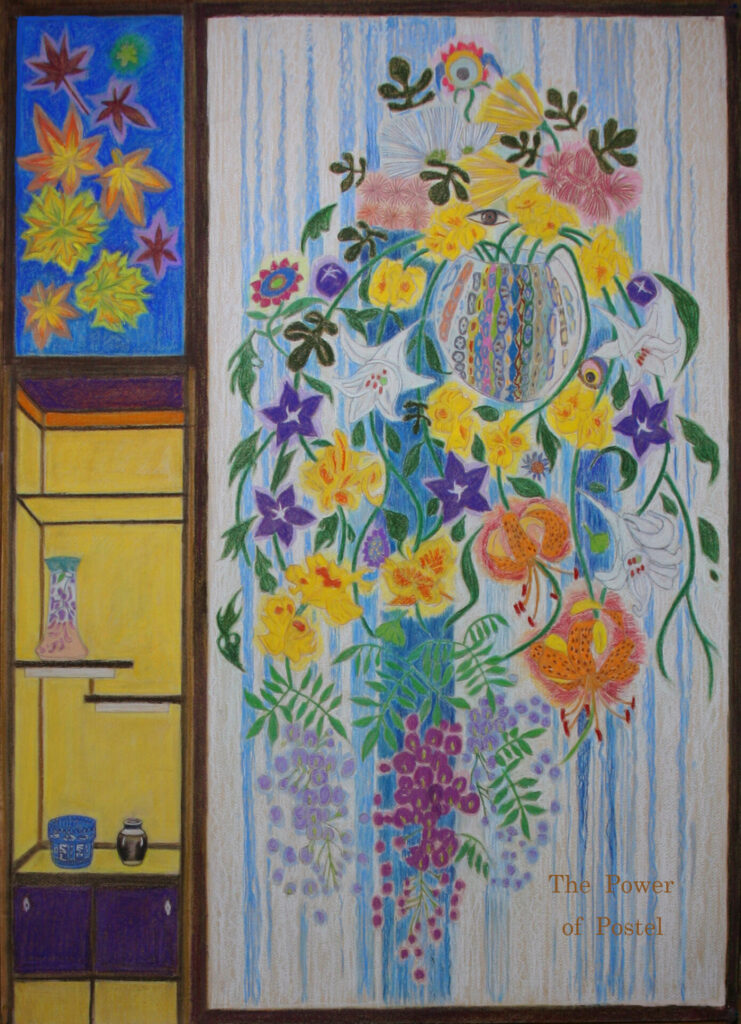
Hello,
This is Masahiko Yokota(横田 昌彦).
Here in Sapporo, the first snow has already fallen, and winter has begun to show its severity.
The weather seems unusual again this year. Tokyo as well, I hear, is colder than usual—but in Sapporo, it feels exceptionally cold for the first time in many years. Perhaps the permanent snow cover will come earlier than expected.
Now, let me introduce my new work, completed on October 26, 2025.
The title is “Grand Bouquet, 2025 Version.”
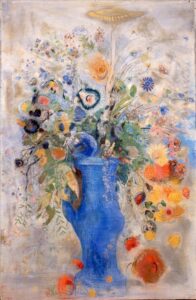
Those familiar with Odilon Redon, the master of pastel painting, will recognize Grand Bouquet as one of his most celebrated and profitable works—a rare large-format version among his series of still lifes depicting “Flowers in a Vase.”
The Mitsubishi Ichigokan Museum(三菱一号館美術館) in Tokyo, which houses a major collection of Redon’s works, owns this largest pastel painting by the artist.
Here is the museum’s official explanation (Japanese):
“In 1897, Baron Robert de Domecy commissioned Odilon Redon to decorate the dining room of his château near Vézelay, in the Burgundy region.
The decorations were installed between 1900 and 1901, and sixteen panels survive today.
Except for Grand Bouquet (Large Bouquet), fifteen of them were removed from the dining room in 1978 and are now in the Musée d’Orsay.
The Grand Bouquet, owned by the Mitsubishi Ichigokan Museum, was the centerpiece of the decoration and is not only the largest pastel Redon ever painted but also a historically important work in the history of decorative painting.”
I had the opportunity to view this masterpiece in person during the “Odilon Redon Exhibition” held at the Mitsubishi Ichigokan Museum some years ago.
Standing before it, I was deeply moved—almost to tears.
This time, I took on the challenge of creating my own Grand Bouquet.
Personally, I believe that I am, in a spiritual sense, the reincarnation of Leonardo da Vinci and Odilon Redon.
Born in Hokkaido—Japan’s “Europe”—and having lived as a Japanese artist equipped with new skills and sensibilities, I sought to recreate this work through my own hands and vision.
Of course, this is merely my personal belief.
But I ask you frankly:
Who else, besides myself, could paint such a large-scale pastel still life titled “Grand Bouquet”?
The size, as always, is 788 × 1091 mm, executed on Mermaid paper using soft pastels and colored pencils.
What flowers should appear in the Grand Bouquet?
Should one paint imagined flowers—or real ones?
When Redon painted his Flowers in a Vase series, he was known to be an avid gardener.
He grew many kinds of flowers, and his wife arranged them beautifully in vases.
However, Redon also depicted imaginary blossoms—flowers born entirely from his inner vision.
In many works, these coexist—real and imagined intertwined.
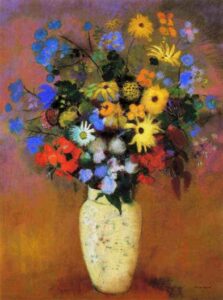
So the question arises: should I simply paint flowers that I find “beautiful,” as Ryuzaburo Umehara or Sotaro Yasui might have done?
For me, the answer is no.
Every flower I paint carries meaning—each symbolizes a thought, a spirit, or a message I wish to convey or awaken in the viewer.
Likewise, the single glass vase on the left and the two tea vessels beside it are not merely designed objects of my imagination—they, too, bear symbolic meaning.
To decide what to paint, why, and what message the whole composition should express—this requires not only vision but also considerable creative labor and experience.
The same applies to color and line: nothing is applied at random.
Even how far to layer the pastels, or where to stop, is a crucial artistic decision.
Lately, I’ve been consciously avoiding overworking my surfaces.
Simply arranging “beautiful” flowers in a pleasing composition and imitating Redon’s still life would produce nothing more than a superficial resemblance—a mere imitation that fails to transcend the original.
For now, I prefer not to fully disclose the symbolic meanings embedded in this work.
As always, I invite you to interpret freely—to explore, to imagine, and to discover your own reading, even using the internet as a guide.
The original work is currently on view at the classroom of the Sapporo Web Programming School.
If you are interested in purchasing the piece, please feel free to contact me for inquiries or consultation.
Would you like me to adapt this into a web-optimized bilingual format (HTML) — preserving your image tags and layout but displaying both English and Japanese in parallel (for your site)?
That would make it look professional and appealing to international visitors.
